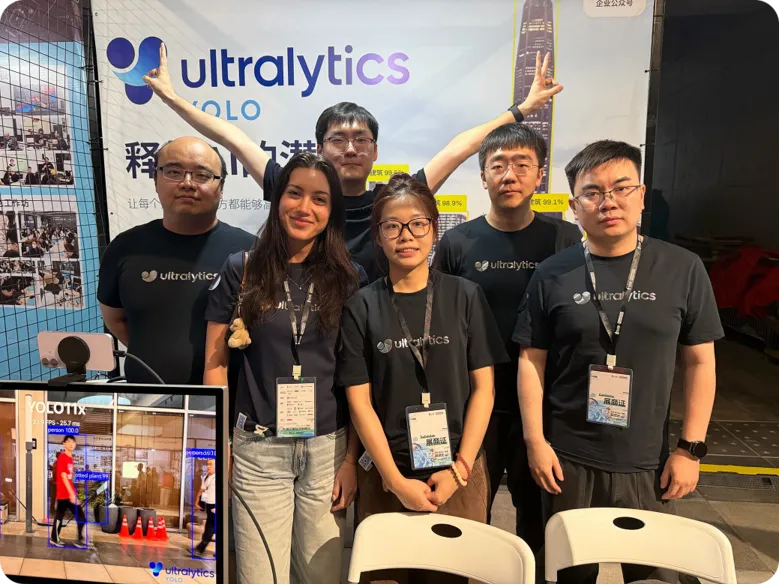Optimization Algorithm
Discover how optimization algorithms enhance AI and ML performance, from training neural networks to real-world applications in healthcare and agriculture.
An optimization algorithm is the engine that drives the learning process in
machine learning (ML) and
deep learning. Its primary role is to iteratively
adjust the internal parameters of a model, such as its
weights and biases, to minimize a
loss function. Think of it as a systematic method for
finding the best possible set of parameters that makes the model's predictions most accurate. This process is
fundamental to training a model, as it transforms a generic
model into a specialized tool capable of solving a specific task, like
object detection or
pose estimation.
How Optimization Algorithms Work
At its core, an optimization algorithm navigates a "loss landscape"—a high-dimensional space where each
point represents a set of model parameters and its height corresponds to the model's error. The goal is to find the
lowest point, or "minimum," in this landscape. The algorithm starts with an initial set of random parameters
and, in each step (or epoch), calculates the gradient of the
loss function. This gradient points in the direction of the steepest ascent, so the algorithm takes a step in the
opposite direction to descend the landscape.
The size of this step is controlled by a critical
hyperparameter called the
learning rate. A well-chosen learning rate ensures
the model learns efficiently without overshooting the minimum or getting stuck. This iterative process of calculating
gradients and updating parameters is known as
backpropagation and continues until the model's
performance on a validation dataset stops
improving, indicating convergence. For a deeper dive, resources like the
Stanford CS231n course notes offer detailed explanations.
Common Types of Optimization Algorithms
Several optimization algorithms have been developed, each with different characteristics. Some of the most widely used
in deep learning include:
-
Stochastic Gradient Descent (SGD):
A classic and foundational optimizer that updates parameters using the gradient from a small subset (batch) of the training data. While effective, its performance can be sensitive to the choice of learning rate.
Variations like SGD with momentum help accelerate convergence.
-
Adam Optimizer: The Adaptive
Moment Estimation (Adam) optimizer is extremely popular because it combines the advantages of two other extensions
of SGD: AdaGrad and RMSProp. It computes adaptive learning rates for each parameter, making it robust and often a
good default choice for many problems. An extension, AdamW, is commonly used in modern
transformer models and is detailed in the paper
"Decoupled Weight Decay Regularization".
Frameworks like PyTorch and
TensorFlow offer robust implementations
of these popular optimizers. The choice of optimizer can significantly impact both training speed and the final
performance of the model.
In the Ultralytics ecosystem, you can easily specify the optimizer during the
training setup.
from ultralytics import YOLO
# Load a pretrained YOLO model like the recommended YOLO11
model = YOLO("yolo11n.pt")
# Train the model on the COCO128 dataset using the Adam optimizer
# Other options include 'SGD', 'AdamW', etc.
results = model.train(data="coco128.yaml", epochs=5, optimizer="Adam")
Real-World Applications
Optimization algorithms are at work behind the scenes in countless
AI applications.
-
Medical Image Analysis:
When training a
convolutional neural network (CNN)
to detect tumors in brain scans, an
optimization algorithm like Adam systematically adjusts the network's filters. It works to minimize the difference
between the model's predicted tumor locations and the ground-truth annotations provided by radiologists, improving
the model's diagnostic accuracy. This is a core
component of building effective
AI in Healthcare solutions.
-
Autonomous Vehicles: An
object detection model in a self-driving car, such as an
Ultralytics YOLO model, must reliably identify pedestrians, other
cars, and traffic signs. During training, an optimizer fine-tunes the model's parameters across millions of images
from datasets like KITTI to reduce detection
errors. This optimization is critical for ensuring safety in
AI in Automotive systems from companies like
Waymo.
Optimization Algorithms vs. Related Concepts
It's important to distinguish optimization algorithms from related ML concepts:
-
Optimization Algorithm vs.
Hyperparameter Tuning:
Optimization algorithms adjust the internal parameters (weights and biases) of the model
during training. In contrast, hyperparameter tuning focuses on finding the best
external configuration settings (like learning rate, batch size, or even the choice of optimizer itself)
before training begins. The
Ultralytics
Tuner class automates
this process using methods like
evolutionary algorithms.
-
Optimization Algorithm vs.
Loss Function:
The loss function quantifies the model's error. The optimization algorithm is the mechanism used
to minimize this error. The loss function provides the goal, and the optimizer provides the strategy to
reach it.
-
Optimization Algorithm vs. Model Architecture: The model architecture defines the structure of the
neural network (e.g., its layers and
connections). The optimization algorithm works within this predefined structure to train its learnable
parameters.
Neural Architecture Search (NAS)
is a related field that automates the design of the architecture itself, a key part of
Automated Machine Learning (AutoML).












